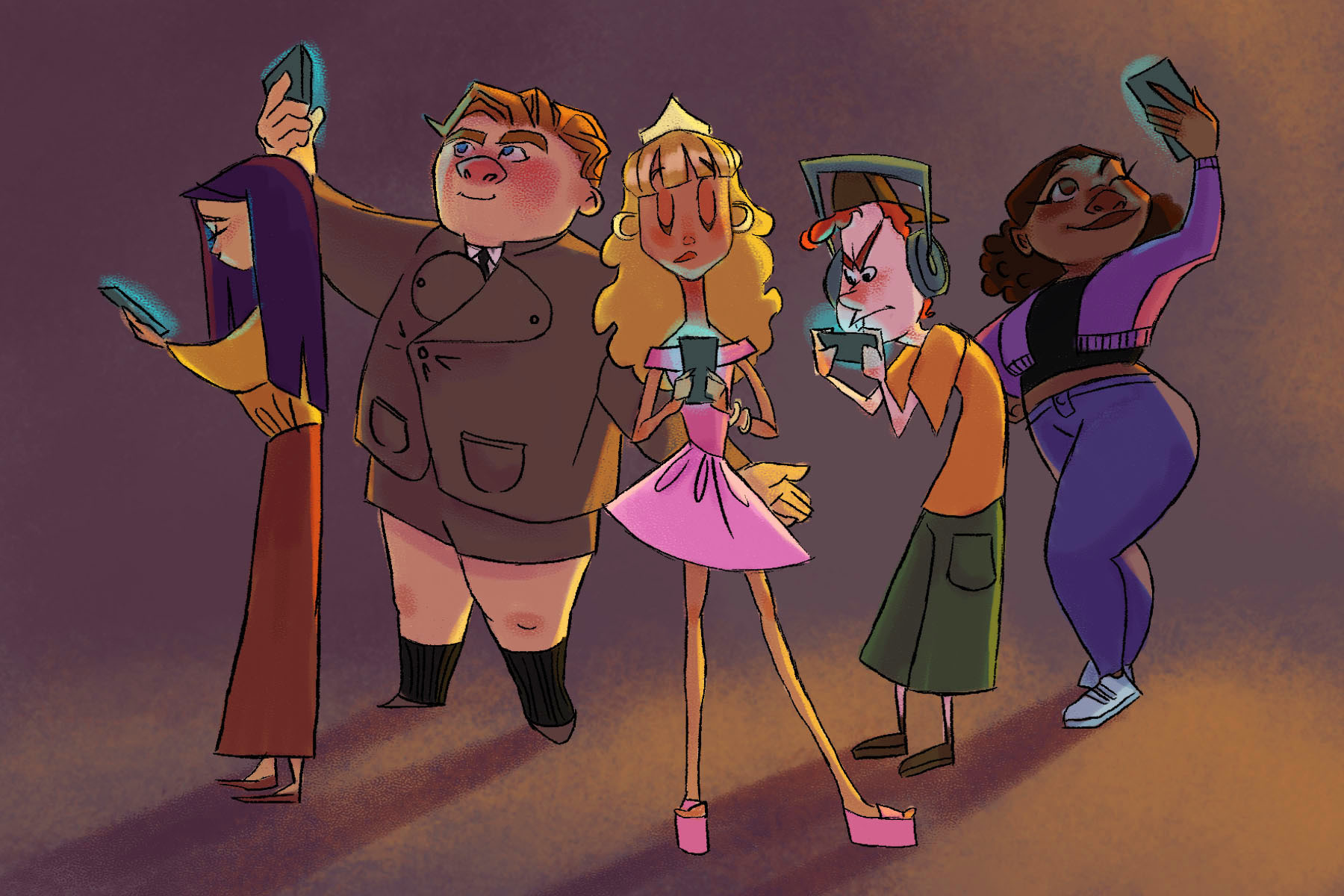I was at the ice cream shop where I work and selected the “Top Hits” radio station on Pandora, which was populated by trending TikTok songs. A family walked in as either Doja Cat’s “Say So” or Lil Mosey’s “Blueberry Faygo” played. An 8-year-old boy turned to his 10-year-old sister and said, “Of course you know this song, you spend your whole life on TikTok.” While the radio station was censored, the social media app, TikTok, surely isn’t. I was surprised to hear the young kids singing along.
Now, I’m only 18 and that’s way too young to play the role of the cynical boomer: “Back in my day we read BOOKS. Do kids these days even know what a library is? Social media POISONED your generation.” I’ll argue the benefits of the digital world any day and I too live my whole life on TikTok. What concerns me is that I’m 18 and she was 10, but we consume the same content.
The TikTok algorithm filters users’ suggested videos on the “For You” page based on profile, location and user interactions. From the very first video somebody likes and engages with, the algorithm begins to curate a personalized “For You” page with related content. Thereby, my “For You” page may look very different from a child’s (maybe not the girl in the ice cream shop though), whose content may be more age-appropriate.
However, the concern comes into play because of the possibility of a child stumbling upon videos with crude, uncensored jokes. While their “For You” pages may filter out such videos, the content is not restricted; all it would take is a click on a user in the comments section or a hashtag search to find PG and PG-13 TikToks.
Children are growing up in an unprecedented era of digital entertainment as they learn to operate phones and tablets at earlier ages. Before gifting children the iPhone 11, there are potential impacts and outcomes of social media and screen usage that we need to consider.
Excessive phone time can affect a child’s social and emotional development. Children go through multiple stages of development from birth to 12 years old that shape the way in which they manage emotions, learn empathy and treat other people. Decreased person-to-person interaction in favor of more screen time can delay social and emotional development. Rather than play with friends at 8 years old and learn to work as a team member in a home, a child watching TikTok dances in solitude is missing out on a developmental checkpoint.
Furthermore, in-person interactions give children the opportunity to learn nonverbal cues and facial expressions, which help a child develop empathy. If a child spends too much time on social media instead of being around others, they may lack nonverbal communication skills and the ability to understand messages.
In a world of bright pictures and rapid-fire messages, the brain must adapt to take in so much information in a small amount of time. This has its negatives when it comes to tasks that take longer; the brain is used to obtaining information quickly and therefore, maintaining concentration for an extended period is more challenging, potentially resulting in shorter attention spans. While children will be able to keep up in our increasingly fast-paced digital world, they may struggle to remain engaged in the classroom.
Overuse of social media can develop into a behavioral addiction. This is particularly concerning during adolescence when pre-teens and teens gain an interest in receiving likes and followers, which activate the reward center in the brain. When their phone buzzes with a new message or a notification for a favorite game, the brain undergoes a chemical reaction through the stimulation of its dopamine-producing neurons. Dopamine is the “feel-good” neurotransmitter; an influx of dopamine creates feelings of pleasure and a sense of reward, which then becomes addicting over time.
Another primary concern is the accessibility of explicit or violent content. Children are impressionable and will undoubtedly absorb the messages or internalize the wrong ideas they see. It is challenging for parents to mitigate the lessons that children will learn if they are not supervising the child the entire time they are on social media.
A child may come across an uncensored video and perhaps they don’t react right away to it, but surely, they will consume the idea and internalize it even if they have an incomplete understanding: If whoever is doing that or saying that is on the internet, it must be okay. Children mimic the behavior of those around them, so it is imperative that they are not exposed to inappropriate actions and language at a young age.
The detriments of social media on the growth and well-being of children become much more severe when technology is overused. As the saying goes, anything in excess is bad. Digital media as entertainment does have benefits, but it is important for parents to be aware of the complexity of technology’s effects on children.
To avoid addiction and stumbling upon inappropriate content, parents need to set boundaries for their children. Determine what sites they are allowed to use and the durations that they can be online. Surround children with opportunities for in-person communication; encouraging hobbies and activities outside of the virtual world can help to maintain a healthy level of digital media consumption.
Children should be supervised when they’re online — especially when they’re really young — to monitor what they consume, to ensure that they are using the internet properly and to teach them how to stay safe online. Using phones or tablets only as a reward for good behavior can limit overall screen time. While the role of technology is a new dilemma to navigate in raising the first iPhone era generation, well-informed parents will know what is most suitable for their children.

















